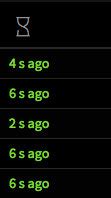Motives for rebroadcasting: understanding the behavior of Ethereum nodes
As one of the largest and most complex blockchain networks, Ethereum has evolved into an ecosystem in which nodes, or miners, are responsible for verifying and relaying transactions. But what causes these nodes to relay every transaction they encounter? In this article, we will consider the motives behind the behavior of Ethereum nodes.
Transaction Fee
One of the main reasons why nodes relay a transaction is to increase the overall cost of the network. The transaction fee received from each transaction serves as a deterrent to attackers seeking to manipulate the network or launch 51% attacks. By relaying transactions, nodes can receive a share of these commissions, which increases their profit.
However, this motivation alone does not fully explain why nodes relay every transaction. Let’s take a closer look at the main factors that govern the behavior of nodes in Ethereum:
Optional transaction fee
As you mentioned in your question, miners are not required to include all transactions in their block if it does not meet certain criteria. This means that nodes can choose which transactions to include and which to exclude, depending on their strategy for maximizing transaction fees.
Importance of Network Congestion
Nodes must balance the need to relay as many transactions as possible with the risk of network congestion. If a node includes too many transactions, the network can become overloaded, which will slow down the transaction time and reduce the overall cost of the network.
To reduce this risk, nodes use various strategies, such as:
- Relay based on threshold value: Nodes can set a threshold value to include certain types of transactions or block sizes. If the node includes less than the required number of transactions, they will relay them.
- Rebroadcast high value transactions only: Nodes can choose to relay high value transactions that are likely to attract more miners.
The role of network scalability
As the Ethereum network expands and new nodes join it, the need for nodes to relay fewer transactions increases. This is due to the fact that the increased number of users and nodes requires more capacity to process data flow.
Conclusion
In conclusion, it should be noted that the motives for the behavior of nodes in Ethereum are multifaceted. Although transaction fees are the main driving force, other factors such as network congestion and scalability also play an important role in determining which transactions will be relayed.
By understanding these underlying factors, we can gain insight into the strategies used by hosts to maximize their revenue while maintaining network performance and efficiency.
Related Resources

- Official Ethereum Developer Blog: [
- Ethereum White Paper: [
Để lại một bình luận